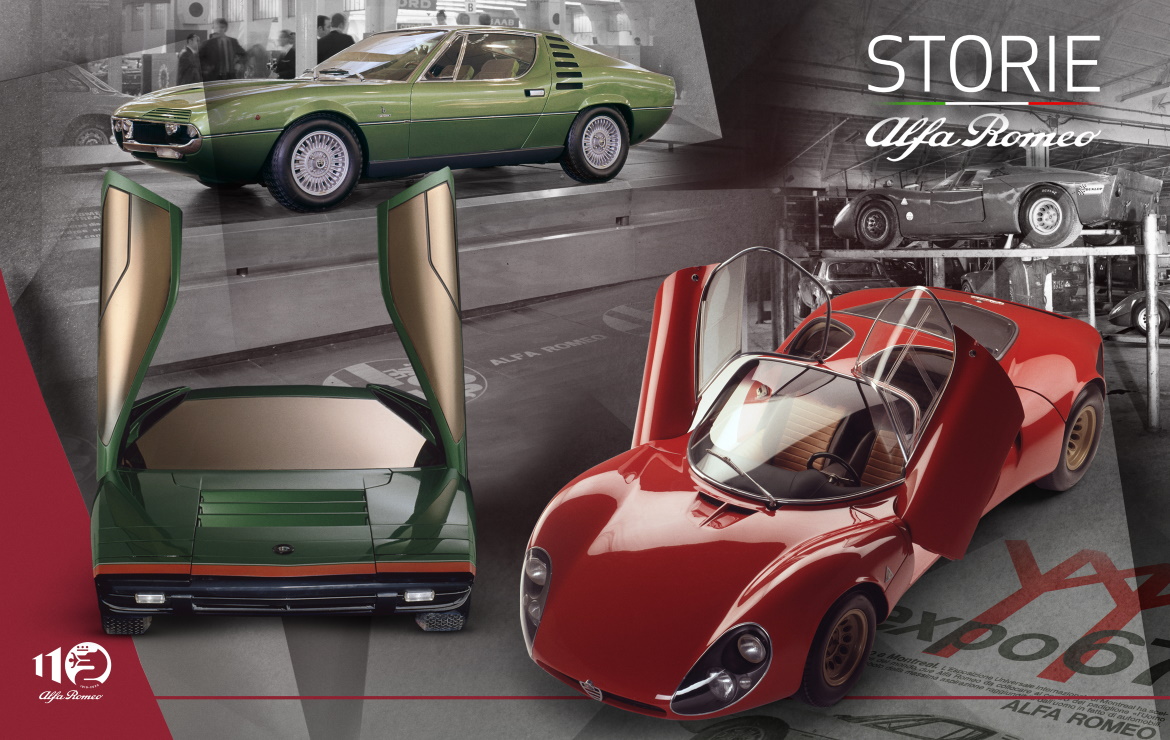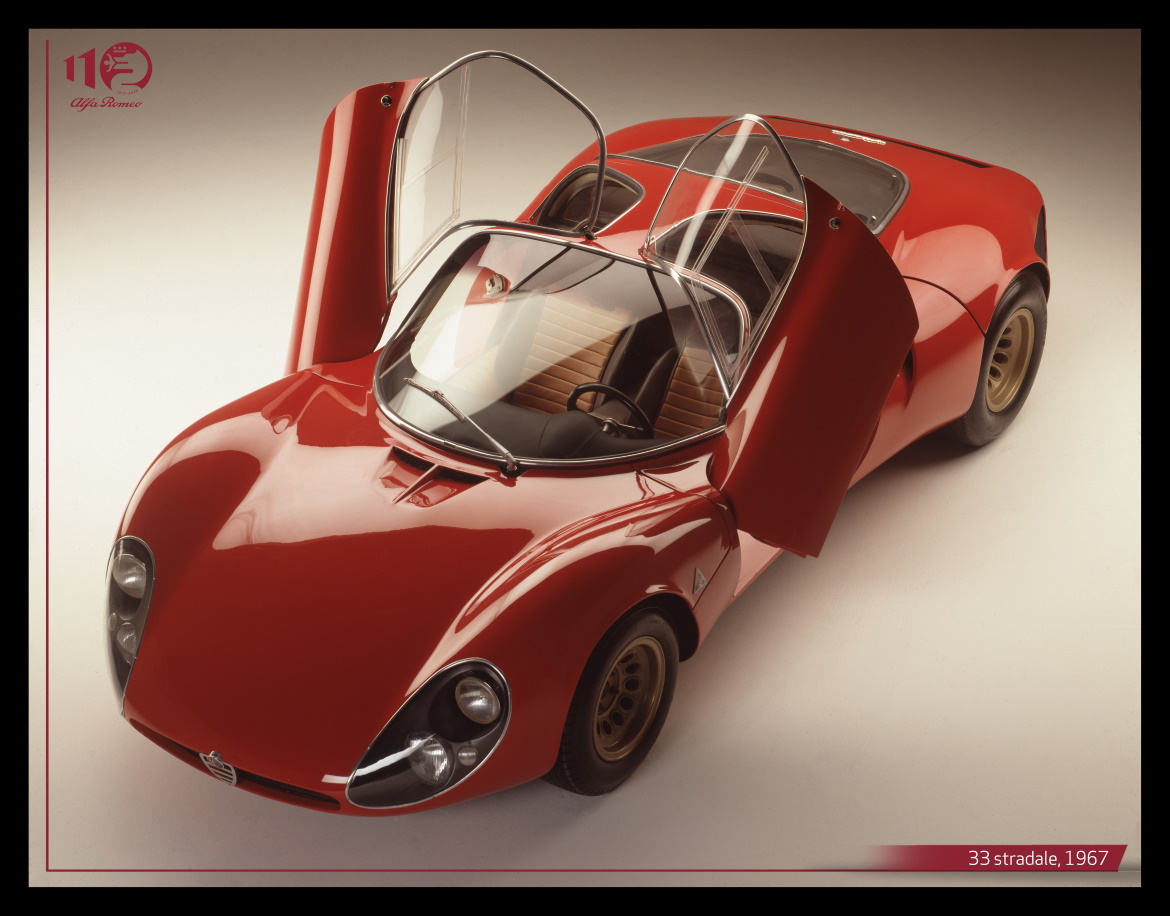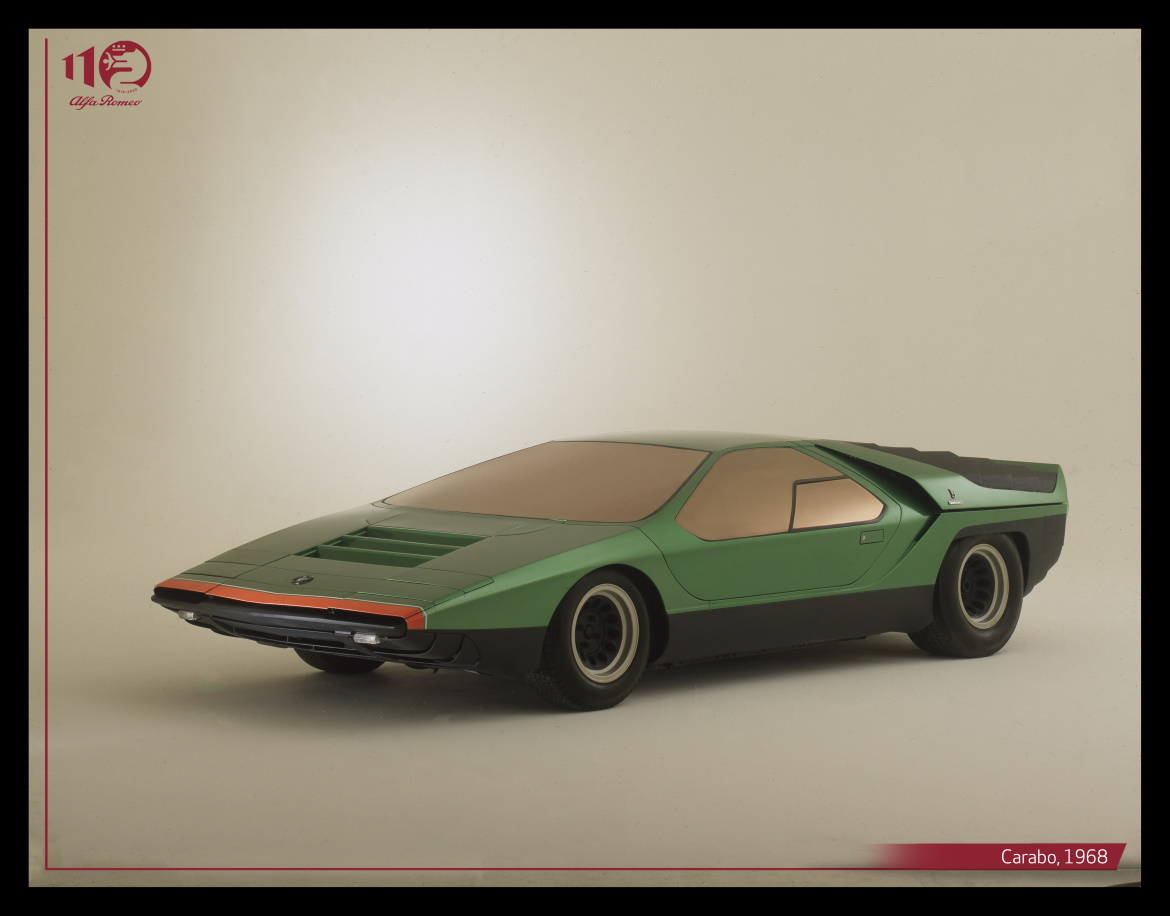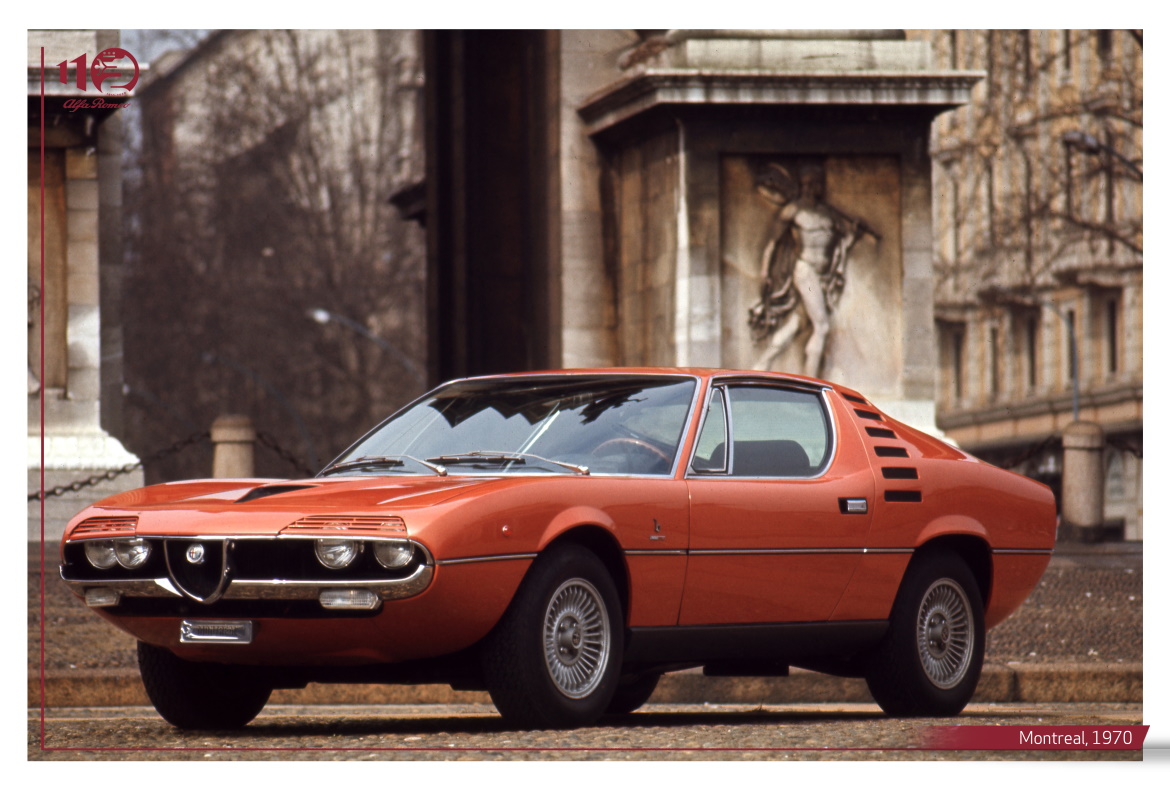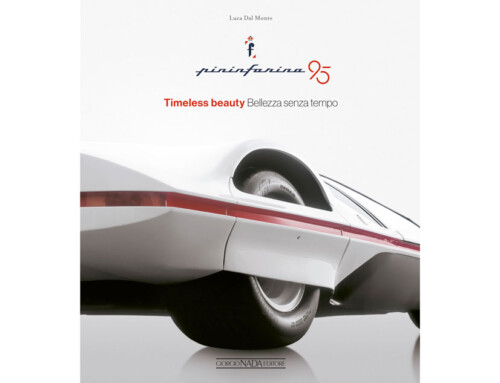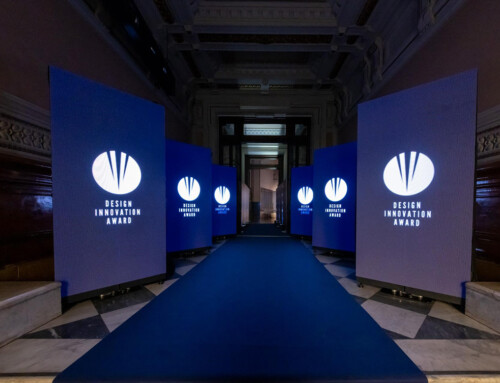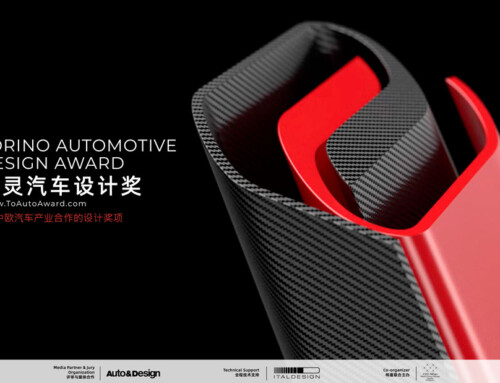Eyes for headlights, mouth for grille, face for front and, of course, car body, with shoulders and sides designed by the wheel arches. These anthropomorphic similarities are still used today. Since the 1930s coachbuilders have made great strides in working metal: they beat the plates by hand, directly on a wooden master, creating authentic unique pieces with rounded, sensual lines that seem to follow an organic ideal. As industrial production evolved, shapes tended to become simpler, because the moulding equipment of the time did not allow as much refinement and three-dimensionality. At a certain point, at the end of the Sixties, the two stylistic inspirations were clearly bifurcated. The difference between anthropomorphic cars and cars of tomorrow is represented in a plastic way by the 33 Stradale and the Carabo, two Alfa Romeo models developed from the same technical base.
The 33 Stradale and the Carabo could not be more different. One is all nerves and muscles, like an athlete portrayed in the midst of competitive effort; the other is all straight lines and angles, aimed at capturing the essence of mobility and projecting it into the future. Much more than two interpretations: two different worlds. The common technical basis of these two cars represents the synthesis of fifty years of Alfa Romeo’s racing experience. Ingenious and rigorous design, skill and courage in the choice of materials, a style that combines technological innovation and creativity: these are the ingredients of the Tipo 33’s design. When Alfa Romeo decides to produce the 33 in a very small series for private individuals, it needs a new look that interprets its racing style in a road-going key. The project was entrusted to Franco Scaglione.
Born in Florence to a family of ancient nobility, Scaglione studied to become an aeronautical engineer until his military service; then he left for the Libyan front, where he was taken prisoner in Tobruk. He returned to Italy at the end of 1946, determined not to resume his studies, and chose to become a car designer: first with Pinin Farina, then with Bertone, then as an independent designer. Scaglione put all his technical expertise and creative audacity into the 33 Stradale project, creating a masterpiece in which innovation in style blends with research into aerodynamics and functionality. The bonnet of the 33 Stradale opens completely to improve access to the mechanical parts and, for the first time on a road car, the doors are elliptical in order to facilitate entry into a car less than a metre high. The only differences from the track version are 10 centimetres more wheelbase, and the chassis is made of steel instead of aluminium. The engine is the same as the Type 33, made entirely of aluminium and magnesium alloys, with indirect mechanical injection and dry sump lubrication.
The Carabo is developed on the mechanics of the 33 Stradale, used in those years also by other designers for one-off exercises such as Giorgetto Giugiaro’s Iguana, the 33 Coupé Speciale and Pininfarina’s Cuneo, Bertone’s Navajo. Even the height is the same, less than a meter, but the rounded lines have completely disappeared: everything in the Carabo is sharp, from the wedge profile to the scissor-opening doors. The name Carabo takes its inspiration from the “Carabus auratus”, a beetle with metallic and bright colours, the same that are proposed on the car: luminescent green with orange details. From this moment on, Alfa Romeo began to pay special attention to whimsical colours and special painting techniques, elements capable of highlighting the uniqueness of the brand even more. A chromatic research that will continue with Montreal.
In 1967, all the nations of the world participated in the Montreal Universal Exhibition with their best technical and scientific achievements. Alfa Romeo is asked to create a technological symbol for the Expo – a model that represents “man’s greatest aspiration when it comes to cars”. Satta Puliga and Busso ask for Bertone’s collaboration, and Gandini is commissioned to design the bodywork and interior. The result is a great success. North American visitors greatly appreciate the elegance and content of the car. In the wake of public approval, a series version was developed and presented at the Geneva Motor Show in 1970. Unlike the original concept, this Montreal has a V8 engine derived from the Type 33, increased to 2.6 litres and limited to 200 horsepower. The model impresses with its extraordinary range of colours, both pastel and metallic: from green (already used for the Expo show car) to silver, orange and gold. Colour research is an Alfa Romeo tradition that we will find again in future stories – and which continues today, with the proposal of a new body colour palette: Rosso Villa d’Este, Ocra GT Junior and Verde Montreal. Tints inspired by the brand’s 110 years of life and dedicated to some of its most glorious models.

